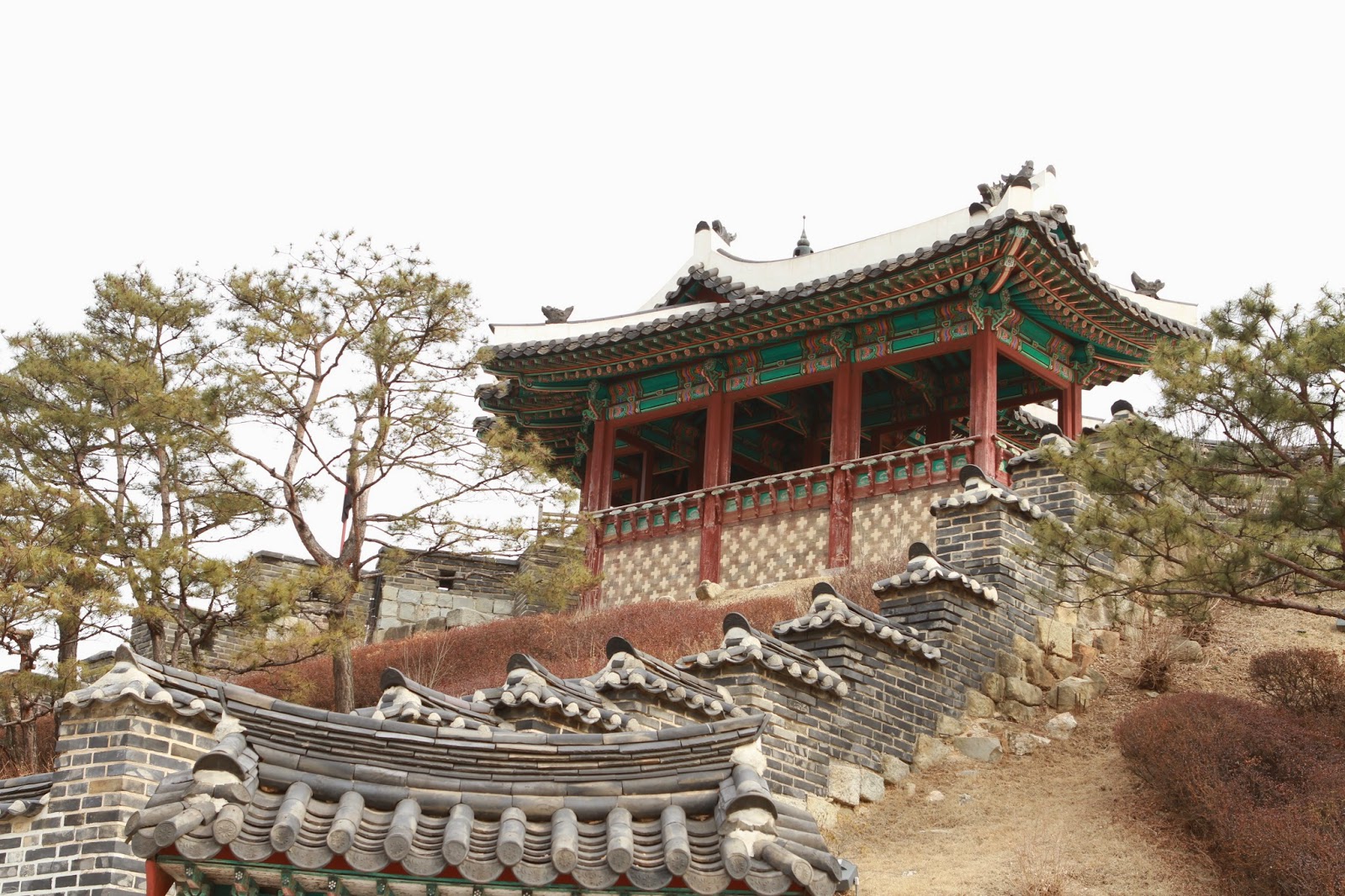History:
Suwon is a city with a rich history that spans thousands of years. The most notable era from Suwon's history is that of King Jeongjo and the building of the Hwaseong Fortress. King Jeongjo, the 22nd king of the Joseon dynasty, ordered the construction of the Hwaseong Fortress in memory of his father. It is said that he made numerous pilgrimages every year to his father's tomb, and to this day, King Jeongjo is remembered for his devotion to his parents. This devotion led to Suwon city's nickname of "Hyowon", which, roughly translated, means "the city of filial piety".
Although the majority of the fortress was heavily damaged during the Korean War, most of the fortress was rebuilt years after. The restoration work was done twice and abided closely by the "Hwaseongsungyeokeuigue", a book published during the Joseon dynasty that kept records of the construction of the fortress. Thus, the fortress is a faithful reconstruction of the original fortress. In 1997, the fortress was selected to be on UNESCO's World Heritage list.
Sights:
Suwon Hwaseong Fortress & Hwaseong Haenggung
The Suwon Hwaseong Fortress was built by King Jeongjo in the late 1700's out of filial duty to his father, Crown Prince Jangheon. The Fortress is approximately six kilometers (around four miles) long, and features characteristics that make it unique from other standard fortresses. The Fortress has four main gates, each facing the four cardinal directions- north, south, east and west. Since the Fortress is so great in size, the best way to experience the Fortress is to utilize the trolley tour, which brings you around the Fortress in a matter of minutes. The Fortress is valued for its unique features- for example, one key feature of the fortress that shows the innovativeness and novelty of its design is the semicircular brick walls that surround the gates, which once enabled the guards to recognize and prevent attackers from entering the fortress. An interesting attraction in the middle of the Suwon Hwaseong Fortress is the archery range, where vistors can try their hand at traditional Korean gukgung archery.
(Above: Hwahongmun//North watergate)
(Above: Gong Shim Don//Northwest observation tower)
(Above: The wall)
(Above: Gong Shim Don//Northeast observation tower)
(Above: The trolley used for the tour)
(Above: Gates)
(Above: Model of King Jeongjo's mother's 60th birthday celebration)
Suwon Museum of History
The Suwon Museum of History provides history and engineer buffs with various exhibitions that display relics, displays and dioramas of the various eras of Suwon history. The museum offers information regarding the prehistoric era to the Joseon dynasty and from modern Suwon to Suwon in the 60's.
World Cup Stadium
The stadium which housed the 2002 FIFA World Cup, the Suwon World Cup Stadium, opened in May of 2001. Its unique architecture, inspired by the image of a flying bird, led to the stadium's seemingly bizarre nickname "The Big Bird Stadium". In addition, its seat designs were inspired by the famed Hwaseong Fortress, adding a touch of traditional Korean detail to the otherwise modern stadium. Within the stadium, there is a small museum (dubbed the World Cup Memorial Hall) dedicated to the 2002 World Cup. Since the 2002 World Cup, this stadium has been the home of the Suwon Samsung Bluewings- a team that boasts a relatively successful history in Korean soccer.
(Birds eye view image from here)
KBS Suwon Center
For those who are interested in Hallyu and Korean dramas, the KBS Suwon Center offers tours around the outdoor sets where several Korean dramas are filmed. Among the stops on the tour are the makeup room, drama gallery, studio and open set.
Food:
Galbi
Suwon is famous for its Galbi, a Korean short rib dish marinated with garlic, sugar and soy sauce. Suwon's Galbi differs from traditional Korean Galbi in that people in Suwon use salt instead of soy sauce to marinate the rib. Suwon has hosted the annual Suwon Galbi festival since 1995, attracting tourists and foodies wanting to taste Suwon's famous beef dish.
So why is the Galbi in Suwon renowned? The story goes that when King Jeongjo built the Hwaseong Fortress, he needed food and crops to feed the soldiers stationed there. To do so, he gave out seeds and cows to farmers, and decreed that farmers were required to pay back one cow every three years. Thus, as the number of cows and the cow industry in Suwon grew, the beef dishes of Suwon developed as well.
Although Galbi restaurants are ubiquitous in Suwon, some of the most renowned restaurants are Kabojung Kalbi and Bonsuwon Galbi.
Basic phrases:
Hello- 안녕하세요 annyeong hasaeyo
Thank you- 감사합니다 gamsa habnida
Bye- 안녕히가세요 annyeong hee gasaeyo
Sorry-죄송합니다 jue song hab ni da
Excuse me- 실례 합니다 shil leh hab ni da











